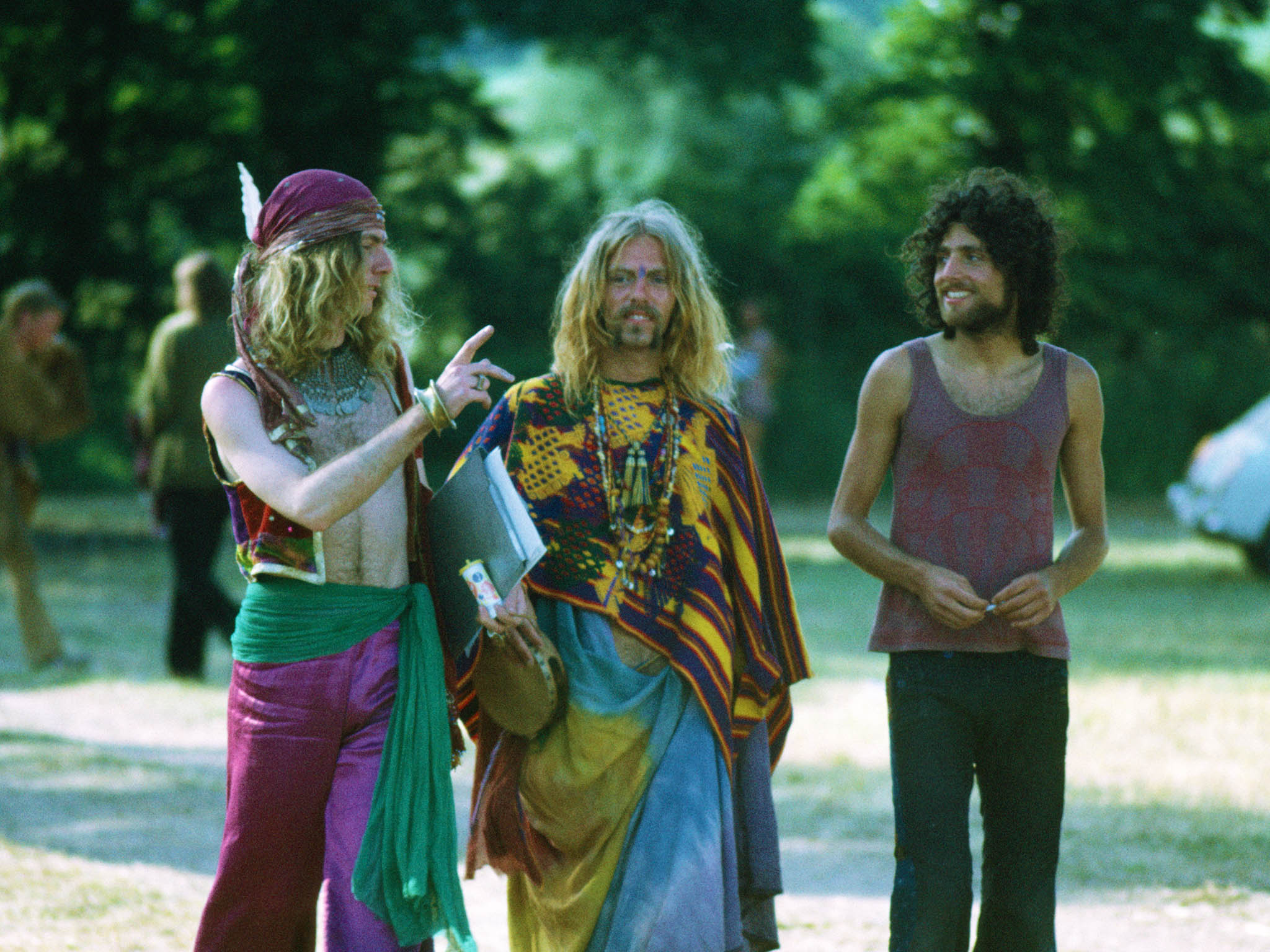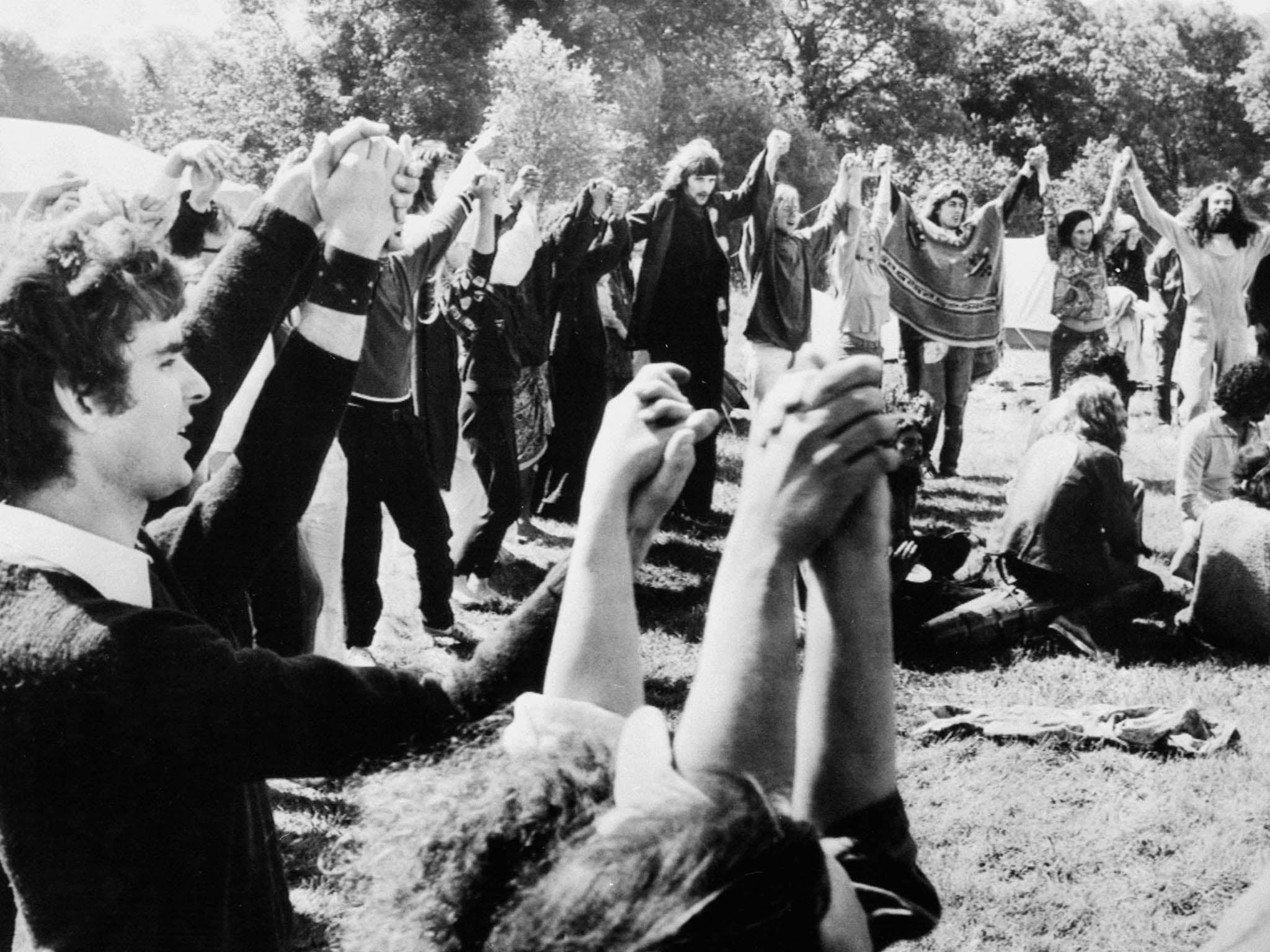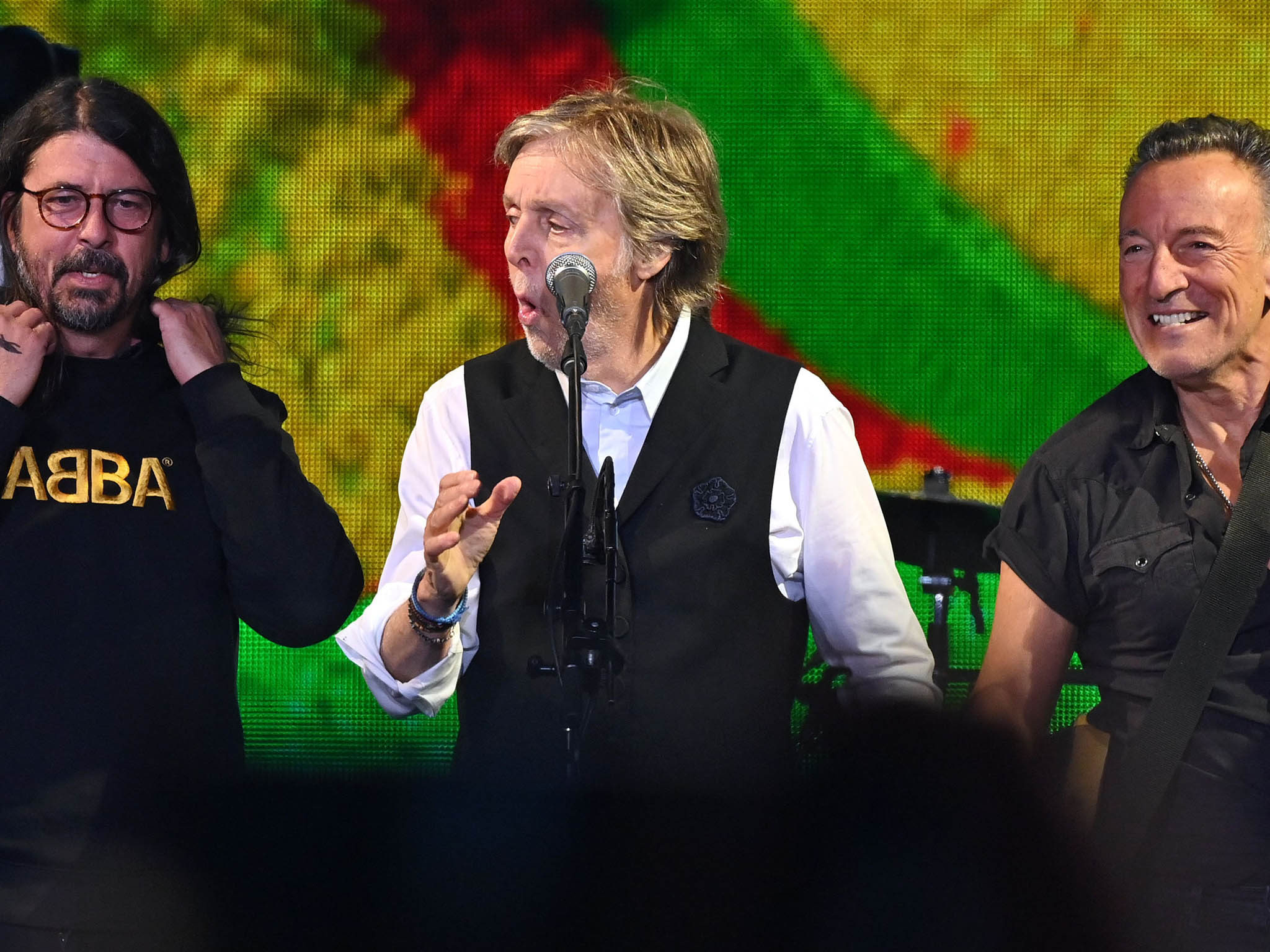Glastonbury has abandoned its roots, and it desperately needs them back
Somewhere along the line, the festival traded lawless anarchy for stockbrokers speed-dialling their dealers from luxury yurts. But Glastonbury veteran Mark Beaumont thinks the event doesn’t need to sacrifice its counter-cultural history to embrace relevance and modernity

Any true Glastonbury veteran has a definitive era they pine for. The activist Eighties. The invasion of Britpop. The year a sewage truck operator accidentally pressed “blow” rather than “suck” and turned the dance tent into a premonition of any British beach in 2023.
Having served 30 years of active Pilton duty, through years redolent of both El Alamein and Somme, I tend to get misty-eyed over the early Nineties’ pre-superfence, wild west period. The days before the festival’s hedonist underbelly got ring-fenced into Lost Vagueness, then wristbanded, crowd-barriered and kettled into the Naughty Corner. When every bridge and hedgerow echoed to the traditional folk culture whispers of “E’s-speed-hash”, and some of my closest Glastonbury friendships were made when fence-jumping drug dealers checked fake tenners by the torchlight from my tent.
That, to me, will always be the real Glastonbury; the sight of shady geezers in the corner of the Beat Hotel trying to hide a three-foot nitrous oxide canister while surreptitiously blowing up huge yellow balloons for twitchy rave kids will always feel like a clownish parody.
I can see, then, how The Telegraph’s Ed Cumming could argue last year that 2022 was a “backwards-looking” event. The cultural equivalent of a major geological feature, Glastonbury has always retained traces of its past incarnations as new layers have been added. Dig deep and you’ll find counter-cultural dinosaur bones – the Leftfield Tent’s generous lashings of Billy Bragg, Avalon’s rustic fayre, Strummerville’s campfire singalongs. Chase beats into the night long enough and you’ll likely still stumble across a semi-comatose Keith Allen out there somewhere, bartending a 5am karaoke session DJ’ed by Bez.
But those, of course, are not all of Glastonbury, nor all who astral-project in her. Cumming pointed to acts such as Herbie Hancock, Paul McCartney, Diana Ross and The Libertines as musical throwbacks on the 2022 bill. But these acts were also sharing stages with Billie Eilish, Sam Fender, Kendrick Lamar, St Vincent, Little Simz and Megan Thee Stallion, speaking volumes about the broad, borderless cultural panorama Emily Eavis has nurtured since Jay Z owned “Wonderwall” in 2008. To be fair, Cumming would have had a much better point this year, with Elton and Guns N’ Roses once more making the Pyramid look built by the ancients and the run-down of stage headliners more chap-heavy than Andrew Tate’s Whatsapp.
Meanwhile the festival continues to evolve. I’ve watched fire-spewing spiders raised from the earth and marched across Worthy Farm to become eyebrow-threatening totems of rave culture. Cranky corners like Shangri-La expand into activist cities with their own party pandemics. The LGBT scene find Pride of place in the party fields thanks to NYC Downlow. Glastonbury might well be the place to get stuck in the mud – often to the point of medical emergency – but in terms of its future-facing spirit and vision it’s essentially David Bowie’s house with a poorly installed outside loo.

But could Glastonbury’s past be better honoured? At the end of Cumming’s piece, he quotes an onsite bar manager called James with 30 years of Glastonburys behind him. “It’ll never be like it was again,” he says. “The problem is the crowd. There’s nobody now who can really relate to all the hippie stuff. Everything has turned mainstream… People come here now to wear a silly hat for a weekend and pretend to be crazy, before they slip back into their mundane madness.”
It’s a sentiment I can sympathise with. When I was first ordained as a lifelong Glastofarian on my first weekend there in 1992, it was a place of both vaporous mysticism and societal rebellion, dominated by alternative lifestyles and subcultures. Until clashes with security in 1990, the new age travelling community were given free entry and a campsite. They were still key to the mindset of the festival into the early Nineties, adept at bypassing the then-lax security to get into a festival they felt was theirs. There were so many gate-crashers in 1994 that 300,000 people – almost four times the festival’s official capacity at the time and Glastonbury’s largest ever crowd – jigged, enraptured, along to The Levellers. Long gone, now, are the days when a field of tipis signalled an area of drum circles, bin fires and herbal abandon, rather than supermodels, soap actors and stockbrokers speed-dialling cocaine contacts.

Meanwhile, the spiritual core of Glastonbury – the pagan, new age, alternative healing, druidic and generally temple-bodied communities in the Green Fields – has become truly archaic, rather than a living and breathing, hippie sideshow. Their practices haven’t changed for millennia, but their proportional representation at Glastonbury has undoubtedly diminished. With the rise both in cost of tickets and the patience and bot coding ability required to get one, the average naturist whittler from Yeovil struggles to get in these days. As a result, the Green Fields of today are less open-house commune and more gong bath peep show. It’s quite feasible that, in the past few years, these areas have become fervent hotbeds of anti-vax rhetoric, but thousands of Glasto tourists will have browsed around, bought a £15 magic pine cone, failed to find the naked sauna and left without ever realising.
Of course, in order to maintain its footing as the greatest show on earth, Glastonbury has to keep pace with the zeitgeist and appeal to Gen Z’s most ardent ticket buyers. But is there not a better way to include the communities that gave the festival its original counter-culture allure, but have since been swamped by its success? Allocations to charities or community groups perhaps? Fresh areas dedicated to genuine alternative cultures rather than new big metal things to boggle the K-heads? I’m all for Glastonbury charging off into the future, but it’d be nice to watch it go from around a fire with its founding fathers – naked as babes, twigs in every orifice, toasting it on its way with a flagon of psychedelic mead.



Join our commenting forum
Join thought-provoking conversations, follow other Independent readers and see their replies
Comments